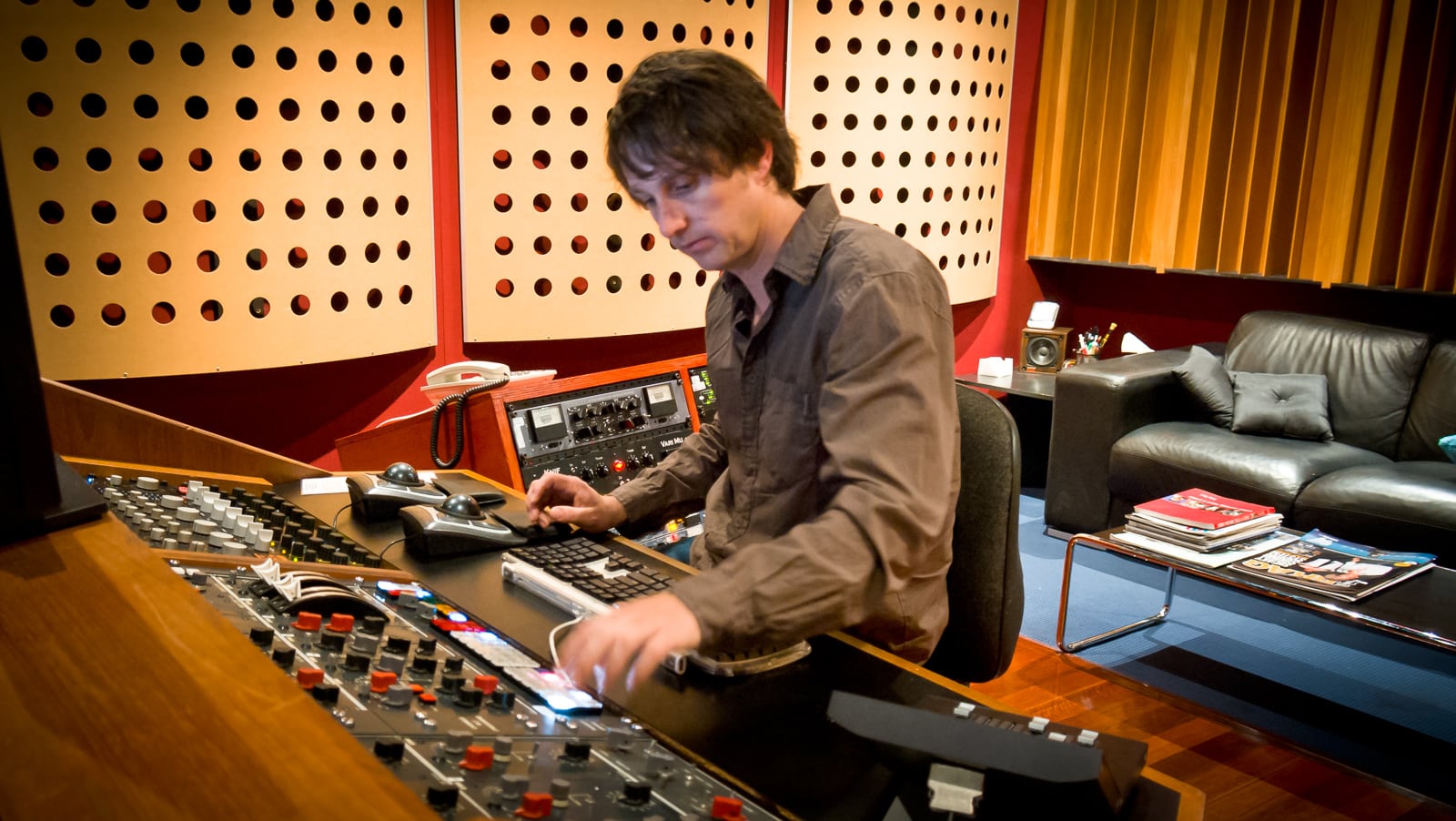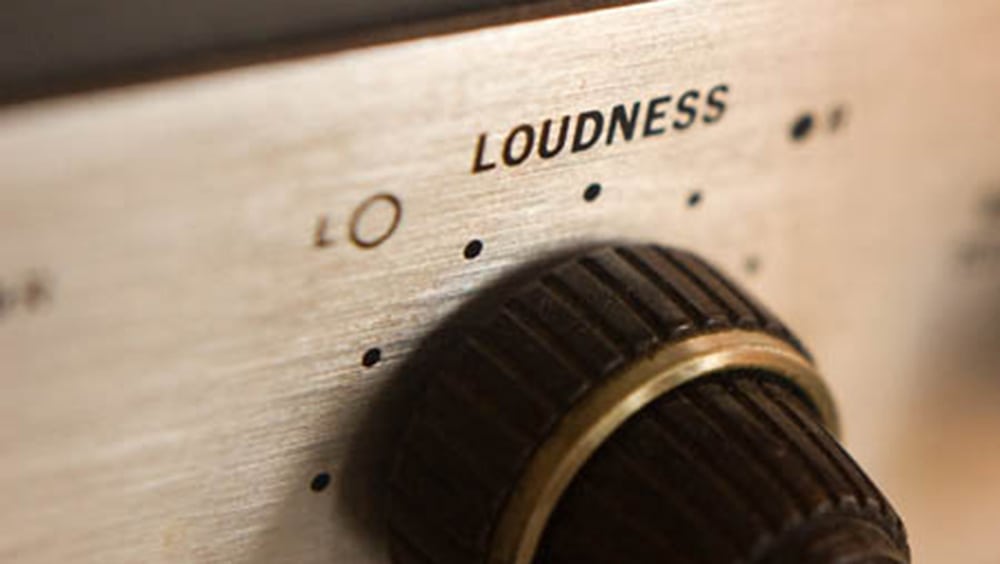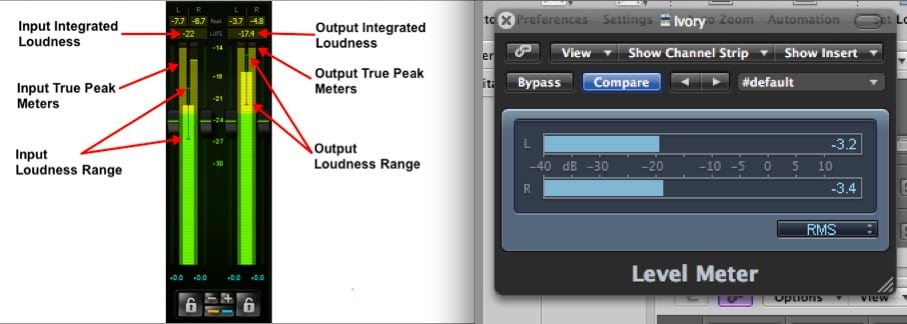Loudness Part 2
In the second part of this blog on loudness I’m going to delve more into metering and dynamic range in order to compare your music to other releases.
Level Matching
I often receive feedback from people that their track doesn’t sound like it has the same low end impact and presence as others. Quite often this is due to one aspect- the track they are comparing to is louder. Because of the way our ears perceive high and low frequencies, even a tiny 0.5-1dB difference will make the louder track appear to have more bass and top end, making it sound a little clearer and fuller – or slightly better, in most people’s opinion. If you want to make a fair comparison, you have to level match. Doing this, you may find that the track you are comparing to may actually sound worse.
Level matching is paramount in mastering when comparing your processed mix to the unprocessed mix. Incorrect or heavy handed processing will result in the mastered track sounding ‘smaller’ than the un-mastered track when level matched, especially noticeable by comparing the chorus or build-up of the track. When the chorus comes in the processing becomes even more apparent as it clamps down on the track. Using level matched A/B comparisons is the best way to check when your processing is improving the sound rather than just making it louder.
Peak and RMS metering
Loudness metering is generally done by a combination of ear and average level metering, such as the VU metering in Leon’s blog [link]. All software DAWs employ peak level metering to let you know about digital overs, which is very important to avoid clipping the signal, but will not give an indication of perceived loudness. Many also have average (RMS) metering now as well, emulating the VU meters found on analogue consoles. As they were traditionally mechanical, The VU metering rise time is slower than a digital Peak Programme meter (PPM), so the VU meter will represent an ‘average’ level rather than the instantaneous peaks, making the VU meter a more accurate representation of the perceived loudness. This is how people mix in the analogue world on a console.
All good so far, but what happens if you have a huge kick drum that dominates the mix? A low frequency high level sound wave will push the average level right up and your metering will ‘ping’ off the stops, yet as we learnt in part one [link], this does not necessarily mean it’s loud- you have to take the frequency balance into account. A big 60Hz sine wave will have huge RMS level, yet many speakers will struggle to produce this and you have just eaten up your entire spectrum.
When mixing, the PPM will show you the transients (like snare hits), and the VU will show you the average (RMS) level. If the average level is very high on certain bass notes or the kick drum, this is eating up all your available headroom and not letting the higher frequencies cut through, so you will lose clarity and impact. Try having more consistent energy in the sub region, and if you want a big sub, place that sound in isolation from other sounds in your arrangement. Use the PPM meters for transients. Again, try to keep these at a more consistent level so your transients don’t lose impact after peak limiting. Many meters now incorporate peak and RMS metering to help with mixing.
Dynamic Range
This brings us to Dynamic Range. Dynamic range is the measurement between the minimum and maximum volume level, given in decibels (dB). The dynamic range of human hearing is around 140dB- This is from the threshold of human hearing to a jet engine. The dynamic range is directly related to the audio bit rate, for each bit you will theoretically get 6dB of dynamic range. So CD quality is 16 x 6 = 96dB.
In the past, the dynamic range was limited by the recording medium (see chart). In order to fit record sources with a high dynamic range, such as an orchestra, the dynamic range had to be reduced. However, if you are reducing the dynamic range you are also reducing the impact of the sound. So the orchestra recording with a small dynamic range will have much less crescendo impact, due to the difference between the quiet and loud passages being reduced.

Looking at the dynamic range chart, storage media has increased in dynamic range by up to 30dB since cassette. Yet modern releases have been reduced in dynamic range by using excessive compression, peak limiting and clipping for loudness.
Now consumers are becoming more aware of this, and as you may have noticed, many artists are bringing back dynamic range into their masters with great success. You can search the Dynamic Range Database for your favourite artist here http://dr.loudness-war.info/
Loudness Metering
The latest loudness measuring tools take into account short term loudness, long term loudness, and frequency perception to give you a loudness number. There are many standards for metering, but the most common are EBU 128 and ITU BS.1770. Many software DAWs and mastering tools such as Ozone now have loudness metering standard.
Here are a few meters that you can use in your DAW:
http://www.meldaproduction.com/plugins/product.php?id=MLoudnessAnalyzer
http://www.nugenaudio.com/vislm-loudness-meter-plugin-standalone-application-aax-au-vst_11
http://www.orban-europe.com/products/data/lmeter/supp_loudmeter_1.html
http://www.tcelectronic.com/lm2-plug-in/
EBU 128 will give you an Loudness units relative to Full Scale (orLUFS) reading and ITU BS.1770 will give you an Loudness, K-weighted, relative to Full Scale (orLKFS) reading. Without getting too technical they are essentially the same except for the gate time. What you are looking for is the integrated loudness. Using loudness metering will assist you in making accurate A/B comparisons. Another advantage of proper loudness metering is the TP max (True Peak Max) number. This will alert you if the intersample peaks will overload a poor quality DAC or lossy encoder.
Conclusion
I know, I know, you want your track to be louder than everyone else’s. Maybe because I work as a mastering engineer you are thinking I have a secret technique for loudness. In reality it mostly comes down to the mix. Mastering should enhance what is already there, and not change the mix drastically in the pursuit of loudness. Keep in mind that a good song will still sell regardless of how loud it is. Hopefully in these two articles I’ve demonstrated that loudness is a delicate combination of frequency balance, dynamic range, and the arrangement of your mix. If you are pushing for level and your mix falls apart, then your track has reached its “loudness potential”.
Written by Ben Feggans.

Ben is one of our 5 resident mastering engineers, and works in Mastering Suite 2.
To book Ben Feggans for a mastering session, contact Lynley via mastering@studios301.com or 02 9698 5888.




Leave a Reply